Ever spotted the alluring stripes of Zebrawood? Is it truly as sturdy as it looks? Dive in to uncover the enigma of this unique hardwood!
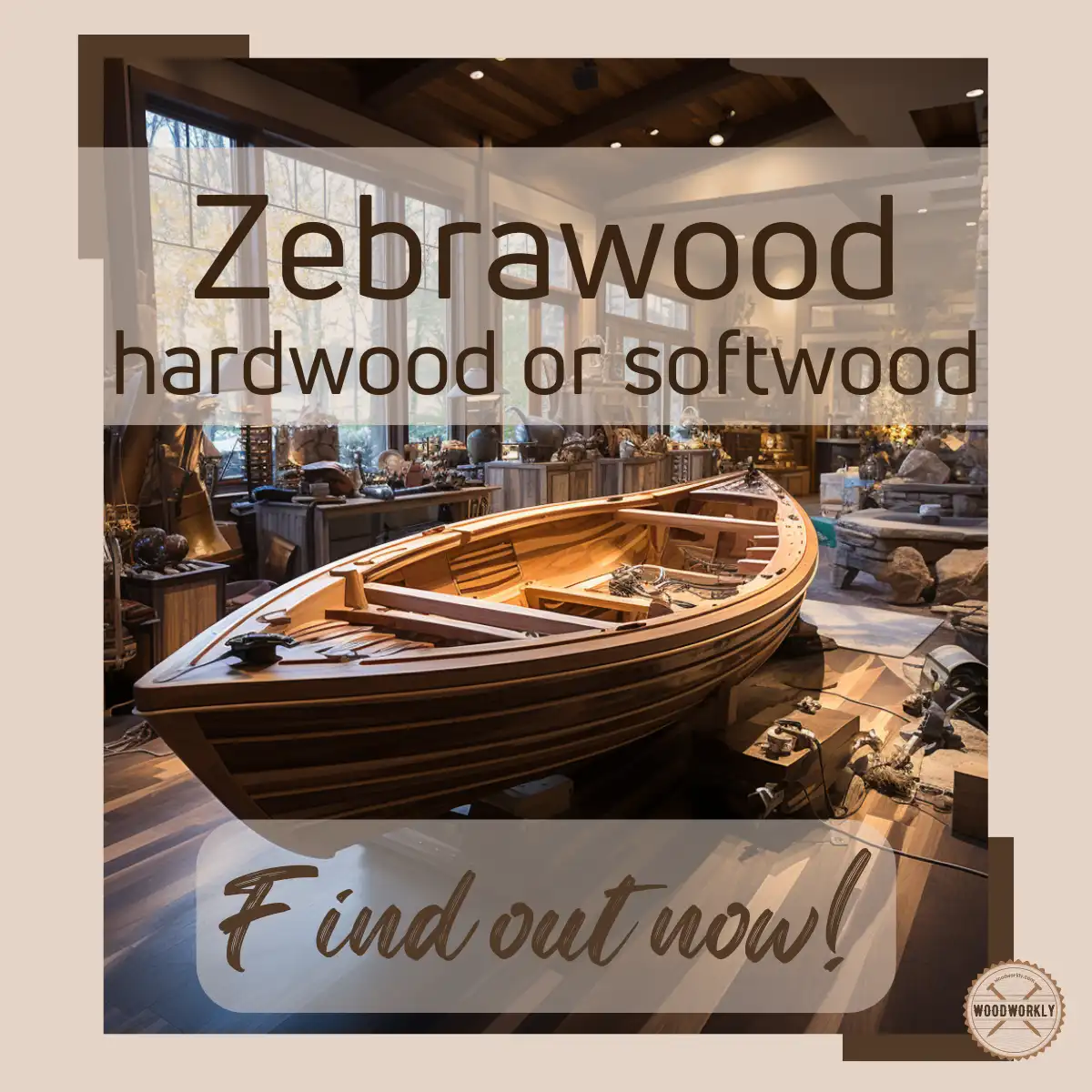
Zebra wood is mainly used as a wood veneer. Other than that, it is a popular material in making furniture, tool handles, boatbuilding, and panels.
When I was first working with Zebra wood, I was curious about its hardness and did deep research to find out how hard it is especially when it comes to making furniture with strength.
So, I did a small research to find out how hard zebrawood really is and able to collect lots of useful info thanks to the experts.
Let’s find out, Is Zebrawood a hardwood?
Yes, Zebrawood is a hardwood that comes from deciduous trees. Zebrawood has a Janka hardness rating of 1,830 lbf (8,160 N) which is considered a high hardness level compared to other hardwood species. Because of being hard, dense, and durable, Zebrawood is resistant to scratches and dents.
But that’s a quick snapshot and there’s a lot more to know about the hardness of Zebrawood.

In this article, I’ll explore, is Zebrawood a hardwood, and how hard Zebrawood is with all the characteristic qualities and pros and cons as well.
Furthermore, I’ll answer some frequently asked questions as well.
Just keep reading!
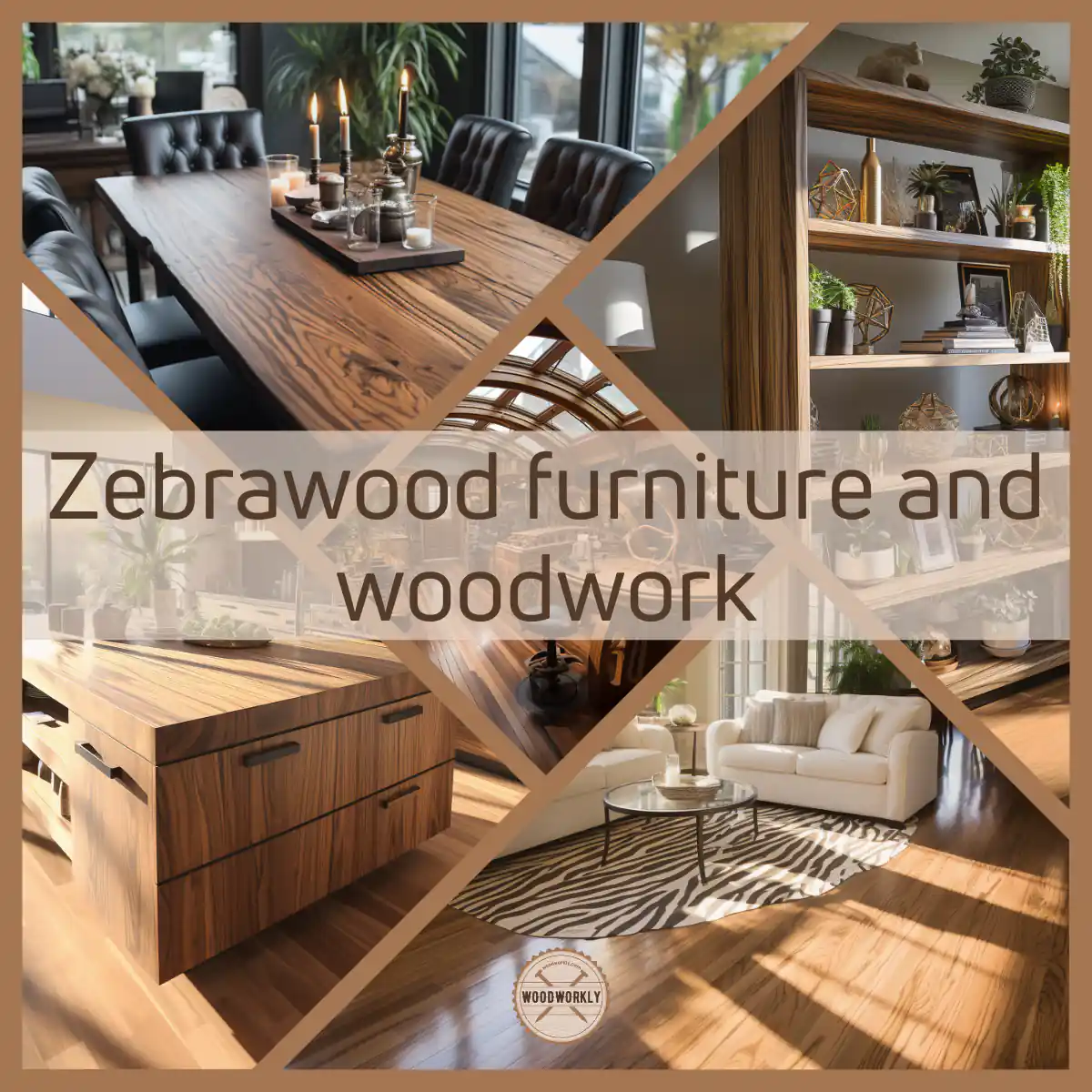
First of all, let’s get a brief knowledge about Zebrawood.
What is Zebrawood?
Zebrawood, as its name suggests, is an exotic type of wood that captures attention with its distinctive stripes, reminiscent of a zebra’s pattern.
If you’ve ever come across a piece of furniture or a wood veneer with light brown heartwood interspersed with dark blackish streaks, chances are, you’ve seen Zebrawood.
I remember the first time I saw Zebrawood. It was in a bespoke furniture shop downtown.
The grain, the contrast, it immediately drew me in. I thought, “What kind of wood has such a unique and captivating pattern?”
The answer was Zebrawood.
Origins: Where Does Zebrawood Come From?
Zebrawood hails from the deciduous trees of West Africa.
It’s not just a pretty face; the wood is known for its toughness, density, and strength, which makes it a preferred choice for various woodworking projects.
If you’ve ever had the chance to work with Zebrawood or even hold a piece in your hands, you’d instantly realize its substantial weight and dense texture.
Grain and Texture: Nature’s Artwork
One of the most striking features of Zebrawood is its grain pattern.
The grain is often wavy or interlocked, a feature that isn’t common in many wood types.
This interlocked grain structure, while beautiful, can make Zebrawood a bit challenging to work with.
But oh, the results when crafted well are absolutely worth the effort!
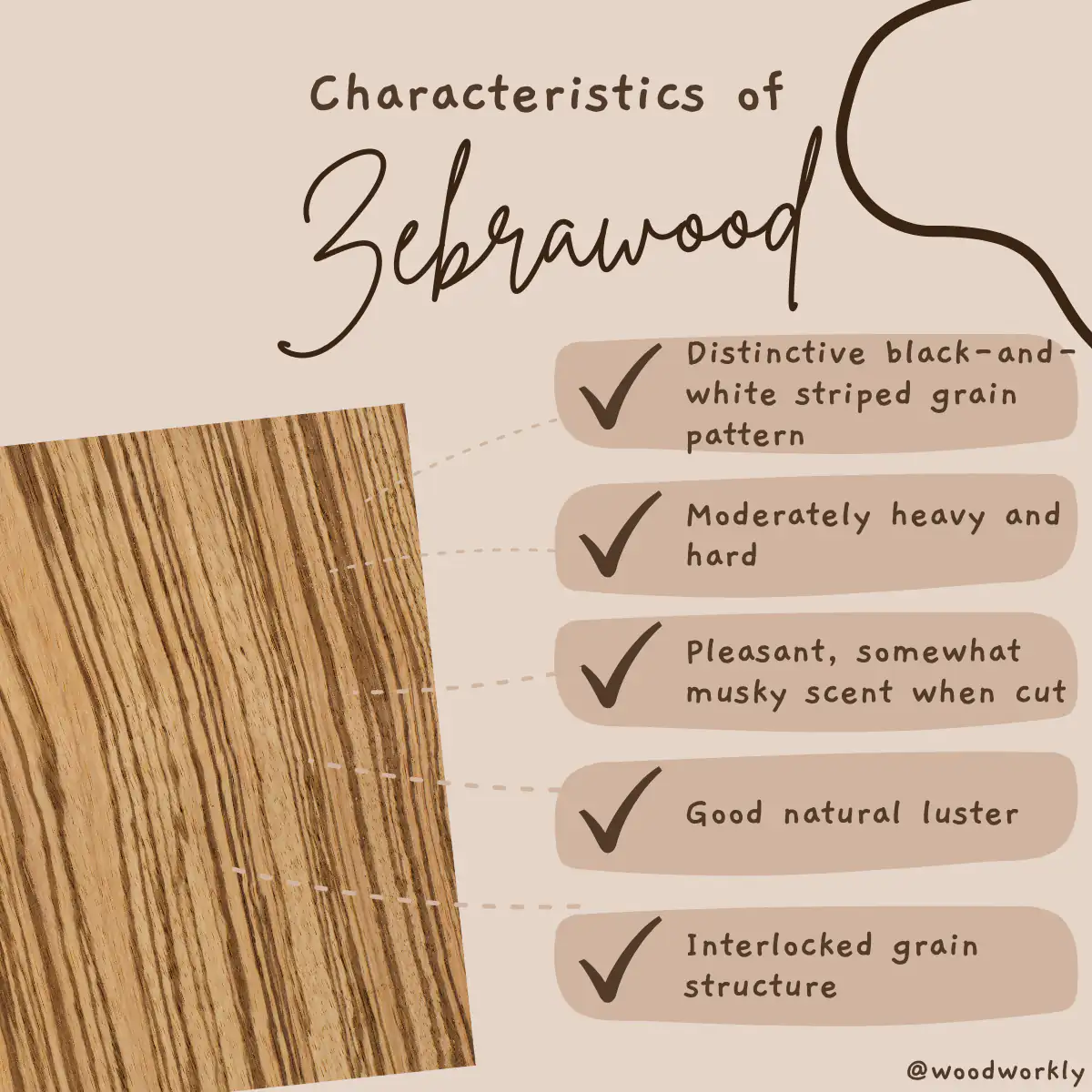
A Word of Caution: Working with Zebrawood
If you’re a woodworker or aspiring to be one, it’s essential to note that Zebrawood has its quirks.
The coarse grain structure means you’ll need well-sharpened tools and a good amount of patience.
Also, a peculiar characteristic of Zebrawood is its slightly unpleasant odor, especially when freshly cut.
Safety first, always – do a facemask when working with it, as the sawdust might cause some irritations.
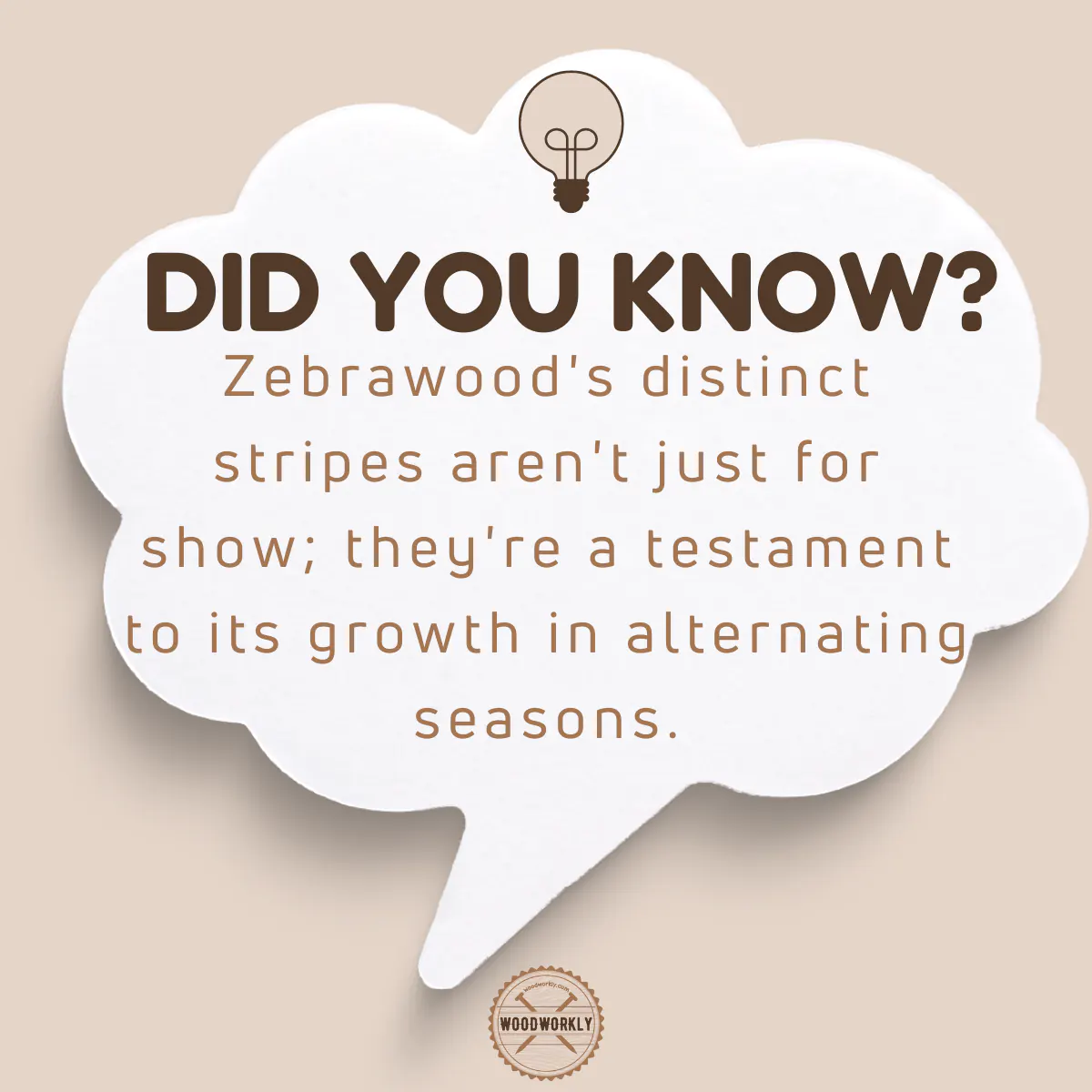
Now head back to our main section which is about the hardness of awesome Zebrawood.
How Hard Is Zebrawood?
Zebra wood is considered a high range of hardwood. It is harder than Ash, Beech, Hard Maple, White Oak, Walnut, and many other popular hardwood species.
Zebrawood has significantly high toughness, density, and strength.
Therefore, basically, Zebrawood can be used for many different woodworking applications with excellent dimensional stability.
Zebrawood has a Janka hardness rating of 1,830 lbf (8,160 N) which is a stunning hardness value compared to many other kinds of wood on the planet.
Janka hardness rating is the standard method of measuring the hardness of wood according to its resistance against wear and shear.
If a particular wood has excellent resistance against wear and shear, that means its Janka hardness rating is high.
Because of being so hard and dense, woodworkers love to work with Zebra wood when making furniture and other woodwork.
They will easily last for so long due to the excellent durability of Zebrawood.
Zebrawood has an open porous fiber structure with coarse grain. The grain pattern is wavy or interlocked. Having interlocked grain structure is uncommon
Having an interlocked grain structure makes Zebrawood difficult to work with.
Overall Zebrawood is able used for any project due to its excellent hardness.
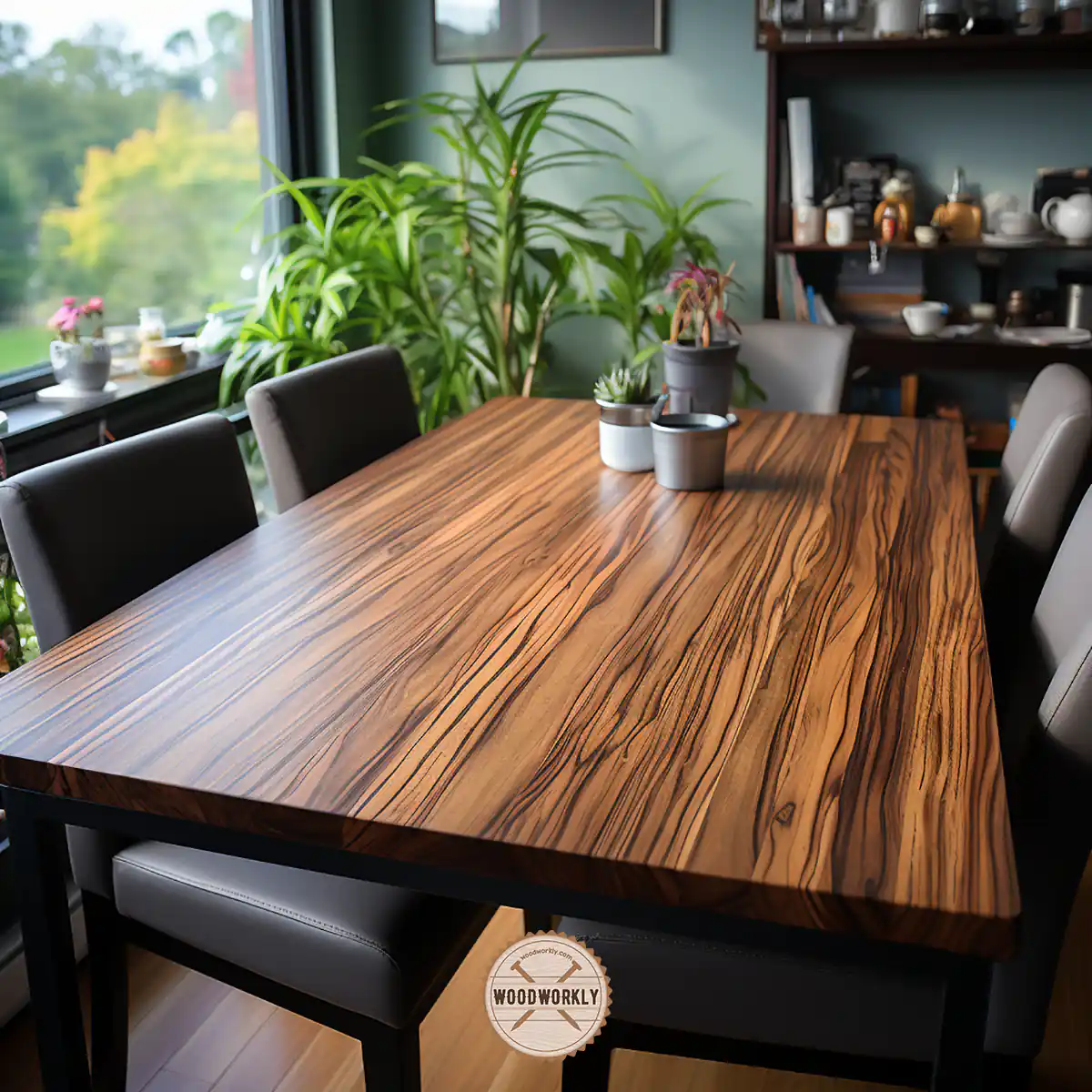
Hardness Of Zebrawood Compared to Other Woods
According to the Janka hardness rating, Zebrawood has a hardness of 1,830 lbf.
But you need to have a good understanding of the hardness of other wood species as well to clarify how hard Zebrawood is.
That’s why we drew a hardness comparison table as below.
| Wood Species | Hardness value |
| Brazilian Walnut | 3,684 lbf (16,390 N) |
| Red Mahogany, Turpentine | 2,697 lbf (12,000 N) |
| Brazilian Cherry, Jatoba | 2,350 lbf (10,500 N) |
| Mesquite | 2,340 lbf (10,410 N) |
| Golden Teak | 2,330 lbf (10,400 N) |
| Zebrawood | 1,830 lbf (8,160 N) |
| Hickory, Pecan, Satinwood | 1,820 lbf (8,100 N) |
| Apple wood | 1,730 lbf (7,700 N) |
| Honey Locust | 1,580 lbf (7,030 N) |
| Hard Maple, Sugar Maple | 1,450 lbf (6,400 N) |
| White Oak | 1,360 lbf (6,000 N) |
| Ash (White) | 1,320 lbf (5,900 N) |
| American Beech | 1,300 lbf (5,800 N) |
| Red Oak (Northern) | 1,290 lbf (5,700 N) |
| Yellow Birch / Baltic birch | 1,260 lbf (5,600 N) |
| Teak | 1,155 lbf (5,140 N) |
| Black Walnut, North American Walnut | 1,010 lbf (4,500 N) |
| Cherry | 995 lbf (4,430 N) |
| Black Cherry, Imbuia | 950 lbf (4,200 N) |
| Red Maple | 950 lbf (4,200 N) |
| Larch | 830 lbf (3,690 N) |
| Yellow Pine | 870 lbf (3,870 N) |
| Douglas Fir | 710 lbf (3,158 N) |
| Silver Maple | 700 lbf (3,100 N) |
| Willow | 570 lbf (2,530 N) |
| Hemlock | 540 lbf (2,402 N) |
| Black Spruce | 520 lbf (2,313 N) |
| Cypress | 510 lbf (2,269 N) |
| Cottonwood | 430 lbf (1,913 N) |
| Redwood | 420 lbf (1,868 N) |
| Basswood | 410 lbf (1,823 N) |
| Engelmann Spruce | 390 lbf (1,735 N) |
| Sugar Pine | 380 lbf (1,690 N) |
| White Pine | 380 lbf (1,690 N) |
| Aspen | 350 lbf (1,557 N) |
| White Cedar | 320 lbf (1,423 N) |
As you can see, Zebrawood is significantly harder than many other kinds of wood that we frequently use in our projects.
Overall, Zebrawood is one of the most versatile and underrated woods on the planet.
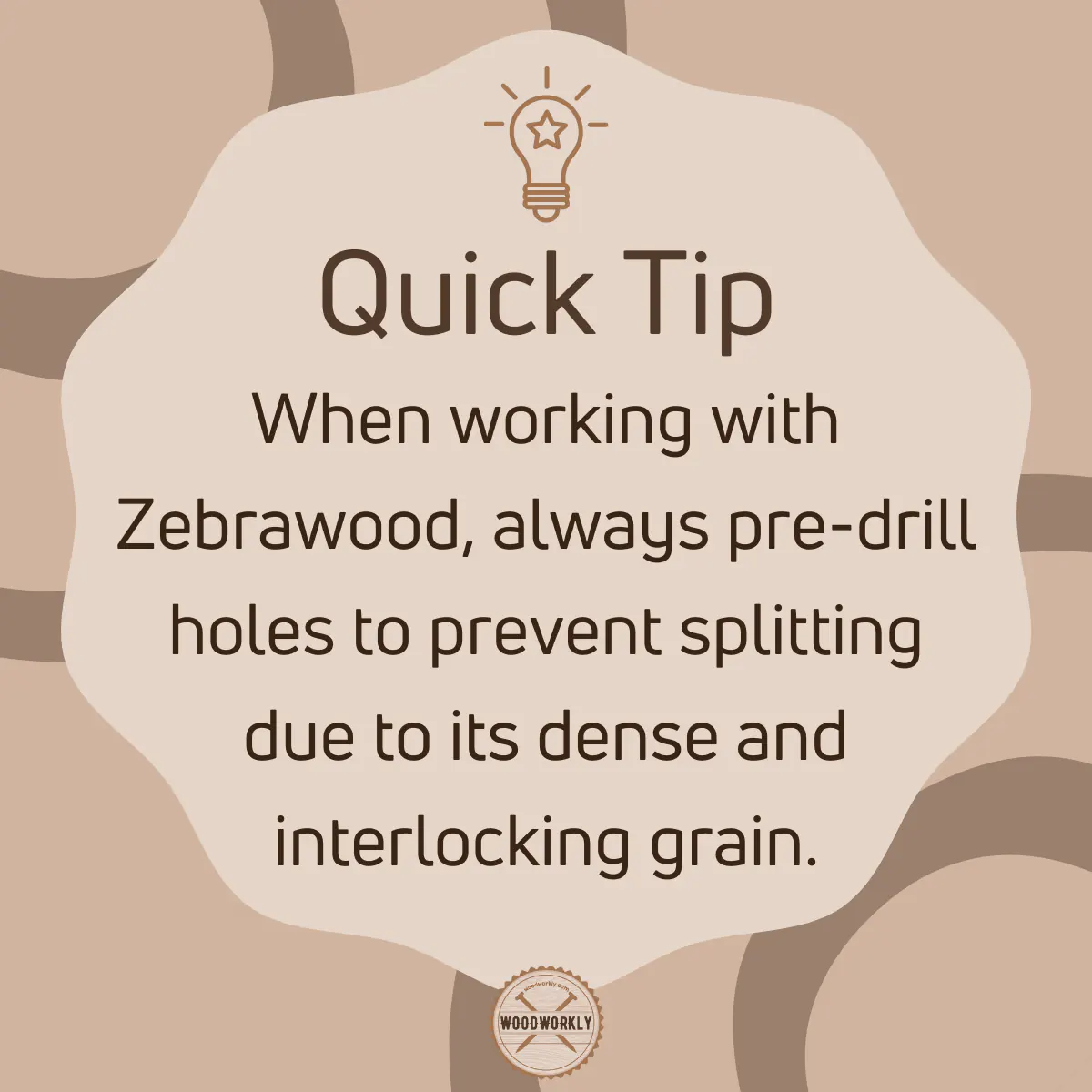
So, in order to get a better understanding of its hardness, let’s discuss some characteristic features of Zebrawood in detail.
Zebrawood Characteristics
Zebrawood is one of the most attractive wood types in the world with light brown color heartwood with dark blackish streaks like Zebra’s stripes.
This makes Zebrawood unique and fancy.
Working with Zebrawood can be extremely difficult due to the coarse grain structure and high toughness.
Shaping and cutting Zebrawood is difficult and your woodworking hand tools and power tools need to be well-sharpened and well-maintained.
Otherwise, wood will tear and chip away easily and your woodworking tools may easily blunt due to the hardness of wood.
But Zebrawood is super easy to finish, glue and stain. It takes wood glue, and wood stain so well and you can get an enhanced wood appearance with little effort.
Plus, Zebrawood has excellent rot and decay resistance. This is one of the best features of Zebrawood which makes it a great choice for outdoor woodworking projects.
Most importantly, Zebrawood has excellent insect and bug-repellant abilities just like Cedar.
This is so useful when making outdoor patio furniture with Zebrawood since those places are kingdoms of bugs and insects.
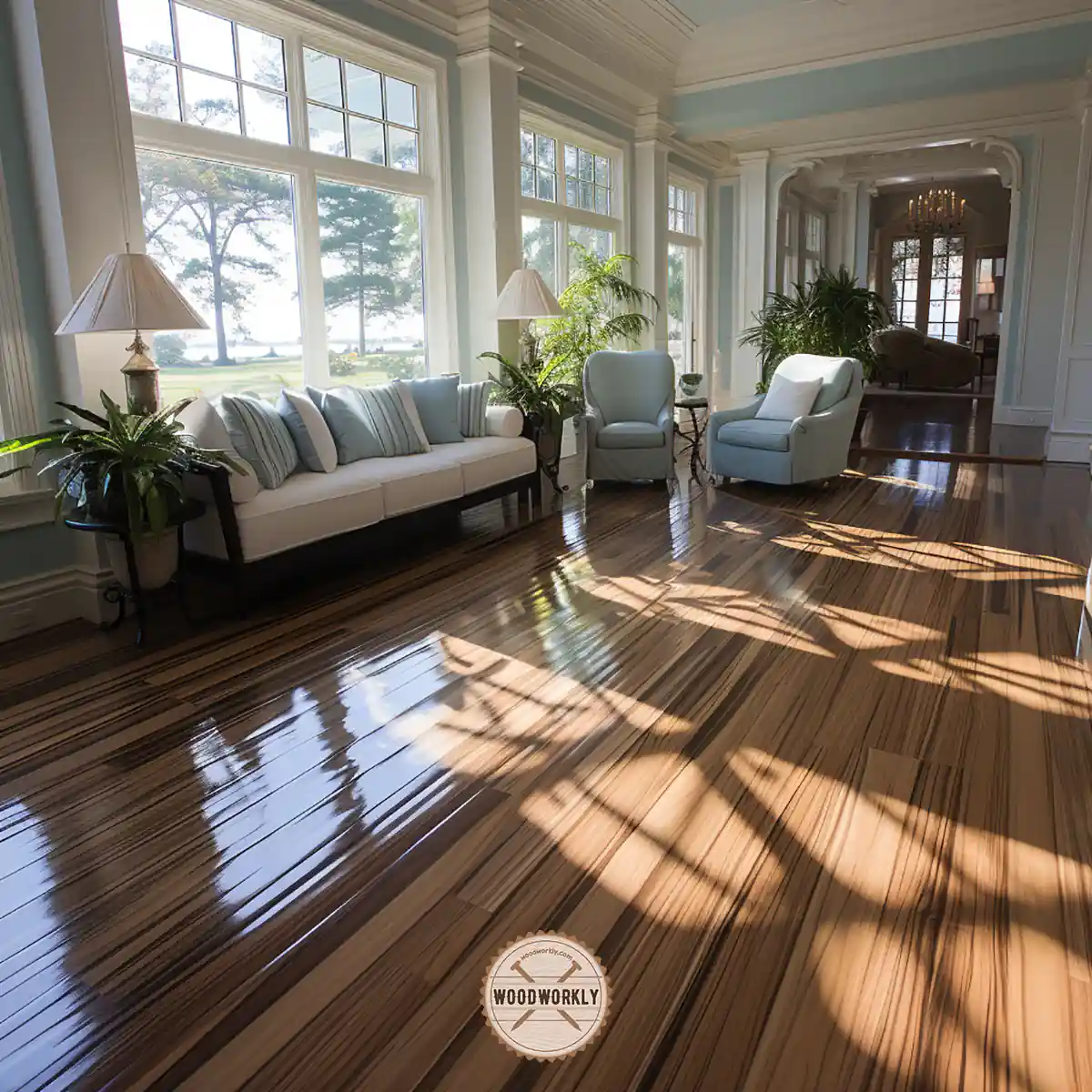
You can easily keep Zebrawood furniture and other woodwork for so long with only little maintenance because of its excellent weather resistance.
But I highly recommend applying a proper sealer before using Zebrawood furniture and other woodwork since wood may tend to rot under extreme weather conditions.
Even though Zebra wood has excellent weather resistance, moisture may find a way to the interior structure of Zebrawood upon aging. Therefore, applying a sealer is good to get the extra protection required.
Zebrawood has a characteristic unpleasant odor which makes it so difficult to work with.
Sawdust and other residues on Zebrawood can cause eye, and skin irritations and breathing issues. Therefore, wearing a facemask is for your safety.
Because of the above features, Zebrawood can be used for both indoor and outdoor woodworking projects.
It can be protected from environmental elements such as moisture, rot, decay, water damage, insect attacks, and more.
Here are the most significant qualities of Zebrawood,
- Hardwood
- High density
- Rot resistance
- Decay resistance
- Resistant to insect damages
- High durability
- Attractive
- Poor workability
- Unpleasant characteristic odor
- Easy to stain and finish
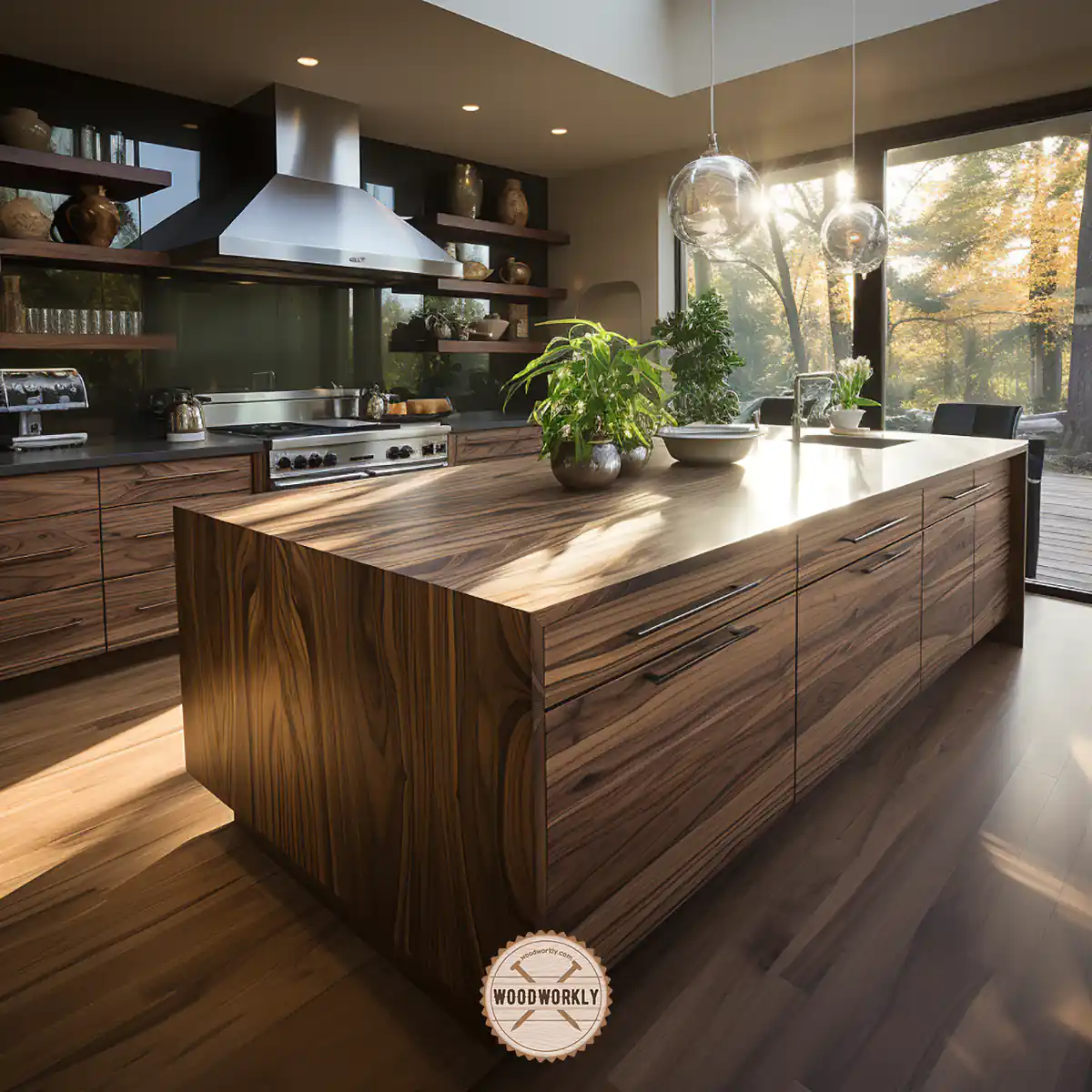
Properties Of Zebrawood
Here’re the main characteristic features of Zebrawood,
| Color | Light brown color with dark blackish streaks |
| Density | 850 kg/m3 |
| Hardness | 1,830 lbf (8,160 N) |
| Wood Type | Hardwood |
| Applications | Furniture making, Tool handles, Boatbuilding, Wood carving |
So, let’s have a look at the advantages and disadvantages of Zebrawood in terms of its hardness.
Pros And Cons Of Zebrawood
| Pros | Cons |
| High durability | Poor workability |
| High hardness and density | Unpleasant odor |
| Rot and decay resistance | Expensive |
| Resistant to insect attacks | |
| Easy to finish | |
| Attractive wood | |
| Able to use outdoors | |
| Non-oxic |
As you can see Zebrawood has lots of benefits that make it so unique among other wood types.
Most of the drawbacks of Zebrawood can be fixed by using sharpened tools and by following proper techniques.
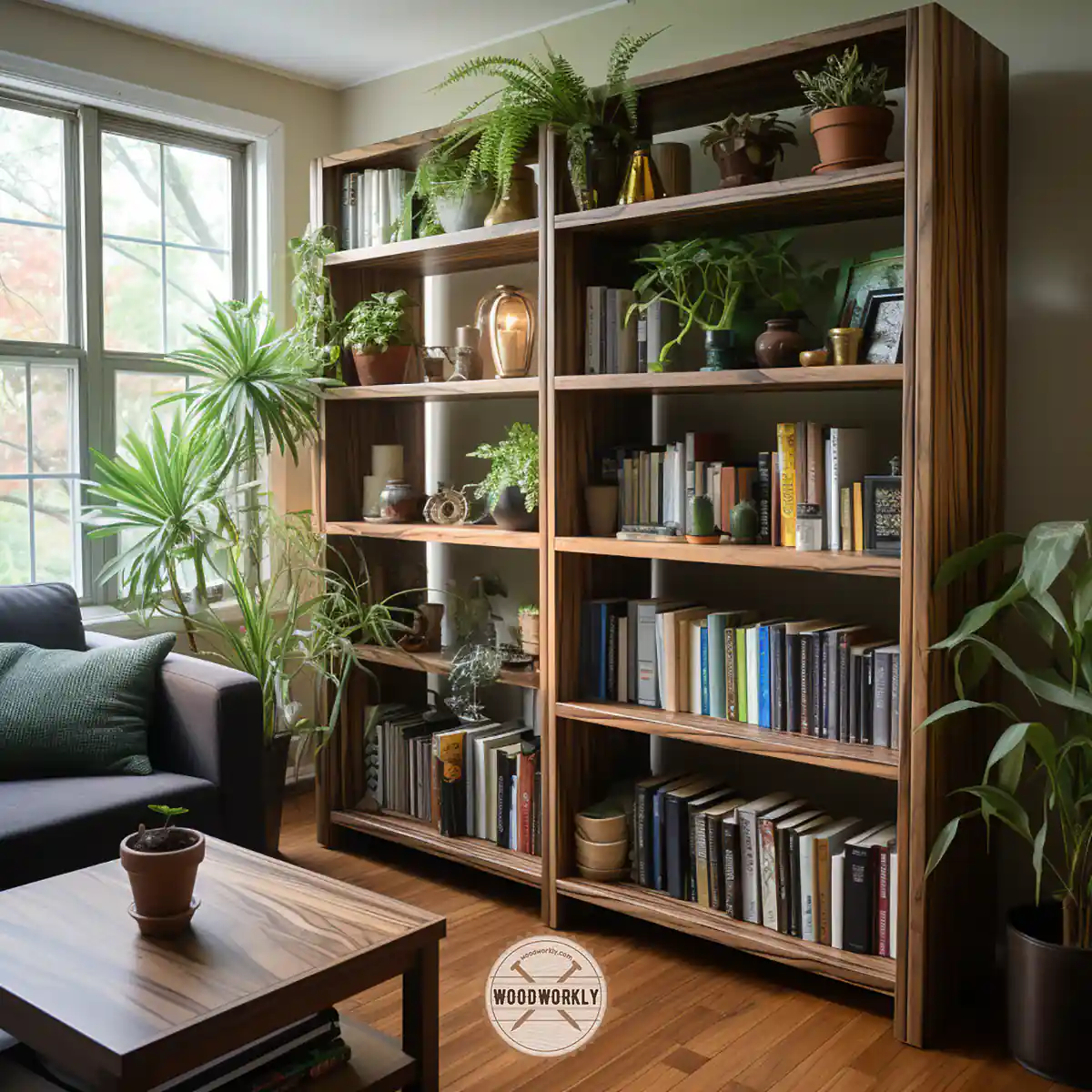
Let’s see the applications of Zebrawood.
What Is Zebrawood Used For?
Zebrawood can be used for almost any woodworking project including indoor and outdoor projects.
Here’re some of the main uses of Zebrawood,
- Boatbuilding
- Furniture making
- Tool handles making
- Knife handles making
- Wood carvings
- Decorative purposes
- Wall panels
- Cabinets
- Boxes and crates
Basically, you can use Zebrawood literally for anything.
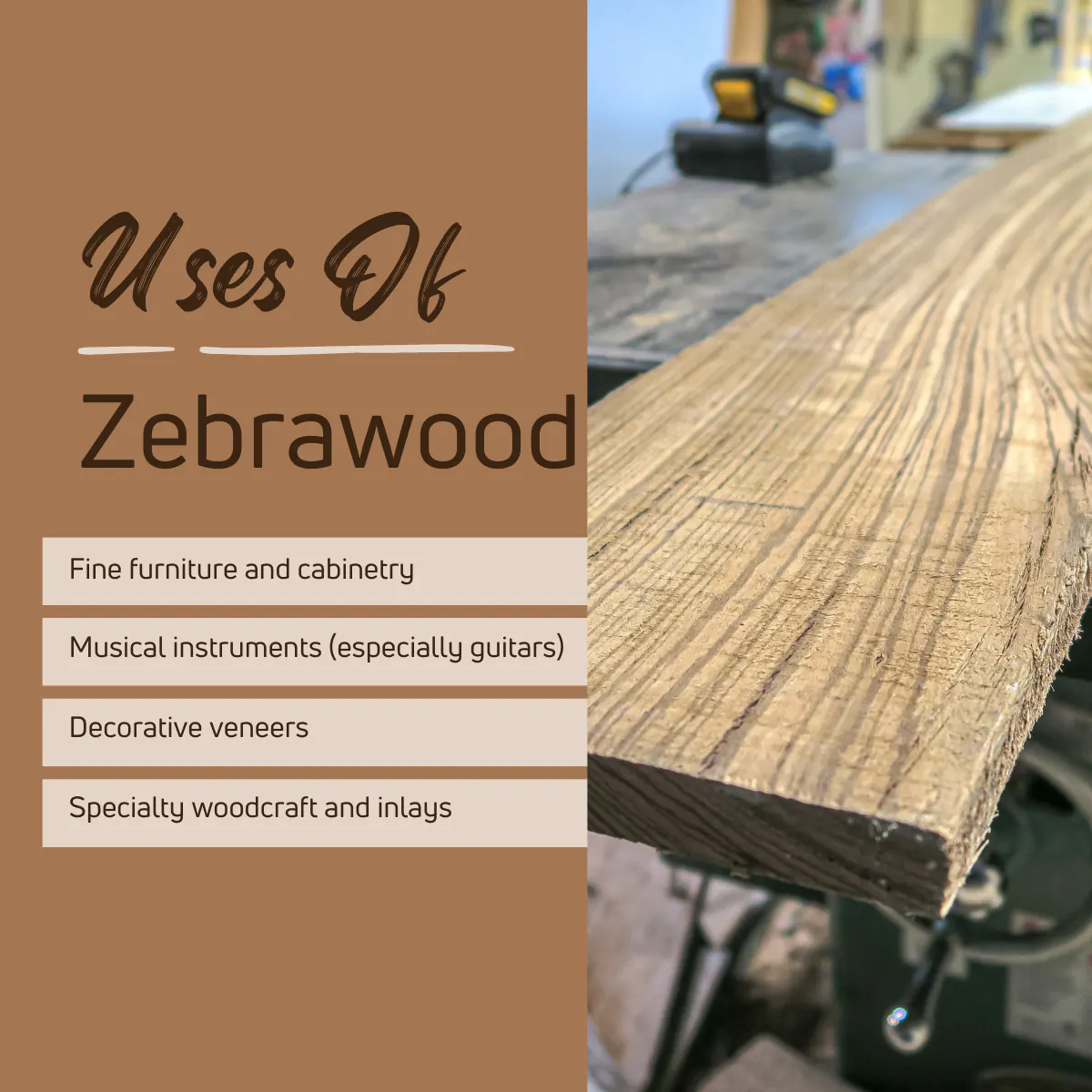
How Strong Is Zebrawood?
Zebrawood is one of the strongest wood types on the planet.
High hardness, density, and toughness make Zebrawood super strong and therefore it can hold and carry stress without losing its stability.
Zebrawood has high crushing and bending strength. You can easily bend Zebrawood using steam without cracking or splitting the wood.
The compressive strength and bending strength of Zebrawood are as follows,
- The compressive strength of Zebrawood is 63.5 Mpa
- The bending strength of Zebrawood is 16.37 Gpa
Because of this excellent strength, Zebrawood can be used for applications that hold load and stress.
You can use it for bookshelves, bedframes, and other heavy constructions. They will last forever with proper maintenance.
That’s it, folks! Hope you found an in-detail answer to the burning question, is Zebrawood a hardwood with many other facts.
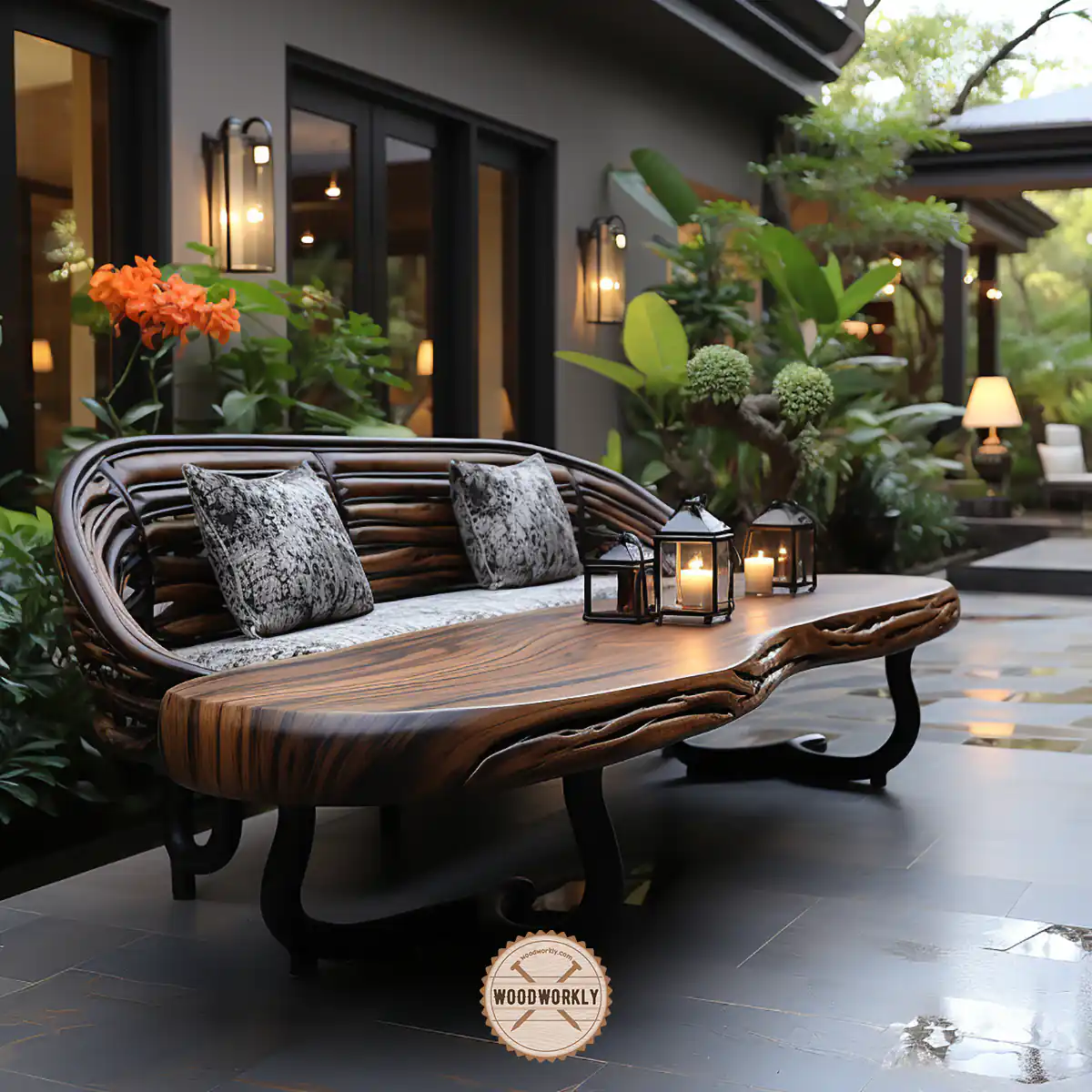
Is Zebrawood Expensive?
Zebrawood is fairly expensive than many other kinds of wood due to its excellent hardwood features like weather resistance, high durability, and strength.
Plus, Zebrawood is super rare to find, and the less availability upon high demand makes the wood more expensive. Same as Rosewood and Ebony.
Therefore, most of the time people tend to use Zebrawood for making expensive luxurious items and for commercial products.
But it is less expensive than Spruce wood.
We rarely see domestic DIY woodwork done with Zebrawood because of its cost.
Is Zebrawood Good For Cutting Boards?
No, Zebrawood is not good for cutting boards since working with Zebrawood is difficult and it has an unpleasant smell. But it is an attractive wood with excellent density.
Plus, sharp kitchen knife edges can damage the Zebrawood surface which causes wood to tear off.
You can make a cutting board with Zebrawood for decorative purposes.
But when it comes to the practical world, Zebrawood cutting boards have to limit finalities due to bad smell, poor workability, and the expensiveness of the wood.
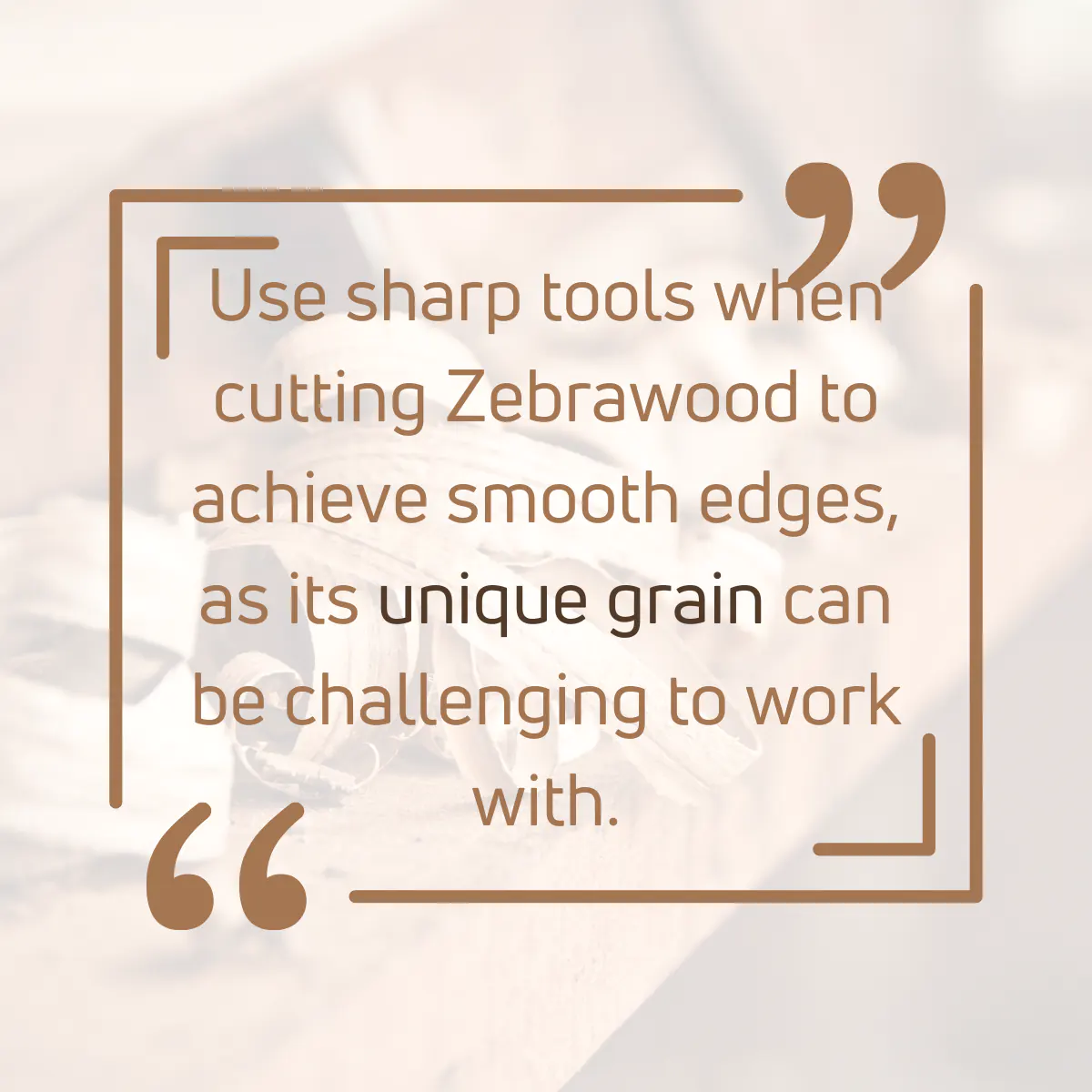
Tips For Working With Zebra Hardwood
If you’ve ever been fortunate enough to lay your hands on this exquisite hardwood, you know it’s a treat.
But it can also be a handful.
Let’s dive into some personal insights, tips, and stories about working with this striking material.
I vividly recall my first attempt at crafting with Zebrawood. Enthusiastically, I began sawing, anticipating smooth sailing.
I quickly learned it wasn’t going to be that easy.
The wood’s interlocking grains took me by surprise, but this initial hiccup taught me valuable lessons and cultivated an even deeper appreciation for this unique hardwood.
Grains and Textures
Interlocked Grains: Zebrawood is notorious for its interlocked grains.
This means the fibers may run in alternating directions in the wood, creating a weave-like structure.
As you can imagine, this can present a challenge when cutting, shaping, or planning.
Tip: Use sharp, high-quality tools to ensure clean and accurate cuts. And always cut with the grain, not against it, to minimize splintering or tearing.
Select the Wood
One piece of Zebrawood can be quite different from another. Some have more pronounced stripes, while others might have a subtler pattern.
Tip: When selecting your piece, think about your project’s end goal.
If you’re going for a bold statement, choose a piece with dramatic stripes.
For something understated, select a piece with fewer contrasts.
Dealing with Odor
Zebrawood has a unique, somewhat sour scent when freshly cut. During my first project, it caught me off guard, and I’ll confess, I wasn’t prepared.
Tip: Ensure good ventilation in your workspace. Over time, as the wood dries and is finished, the odor dissipates.
Sealing and Protecting Zebrawood
The final touch is applying a finish to your Zebrawood piece.
This not only amplifies its beauty but protects it from wear and tear.
Tip: Use oil-based finishes to enhance the depth and contrast of the stripes. I personally love how tung oil or linseed oil makes the grain pop, giving it an almost 3D effect.
Protect Yourself
Remember, while Zebrawood is a pleasure to look at, its sawdust can be irritating.
Tip: Always wear safety gear. A mask is essential, and protective goggles are highly recommended.
Take breaks and always ensure your workspace is well-ventilated.
Is Zebrawood Harder Than Walnut?
Yes, Zebrawood is harder, denser, and stronger than a Walnut. You can replace Walnut wood with Zebrawood considering its physical properties.
According to the Janka hardness ratings, the hardness of Zebrawood and Walnut are as follows,
| Wood Type | Hardness |
| Zebrawood | 1,830 lbf |
| Walnut | 1,010 lbf |
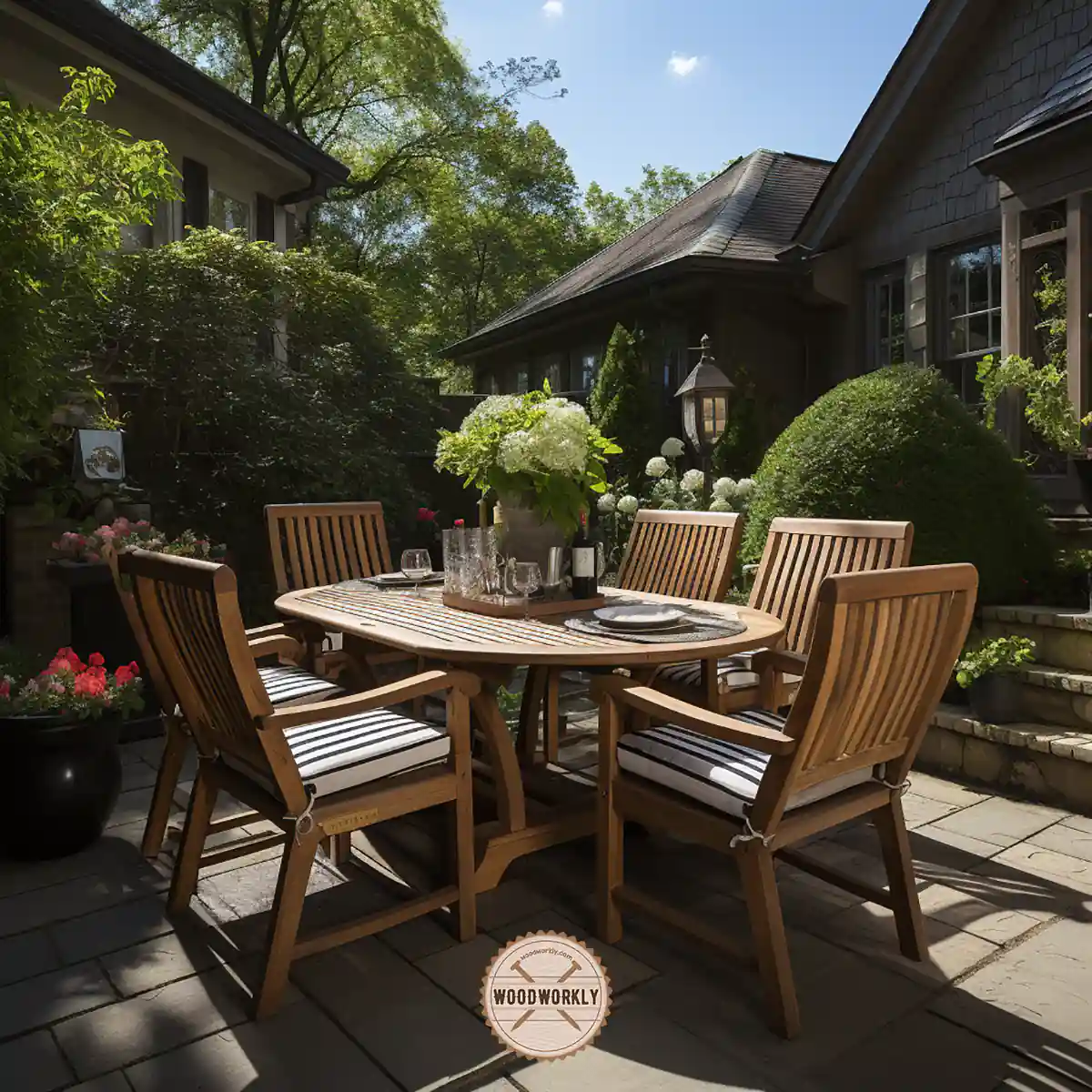
Let’s answer some frequently asked questions.
FAQs
What makes Zebrawood unique from other hardwoods?
Zebrawood is instantly recognizable due to its light brown base streaked with dark blackish-brown zebra-like stripes, setting it apart from most other hardwoods in terms of appearance.
Is Zebrawood suitable for furniture making?
Absolutely! Its distinct appearance and durability make it a favored choice for standout furniture pieces, though it’s essential to use sharp tools due to its interlocked grain.
Does Zebrawood come with any special care instructions?
Zebrawood, like most hardwoods, benefits from occasional oiling to enhance its natural sheen and protect its vibrant stripes. However, it’s relatively low-maintenance.
Is Zebrawood sustainable?
While Zebrawood is stunning, there are concerns about its sustainability due to logging. It’s crucial to source Zebrawood from responsible and certified suppliers to ensure its ethical procurement.
Why is Zebrawood often more expensive than other hardwoods?
Its distinct appearance combined with its origin from Central Africa (which can make transportation more costly) often results in a higher price point compared to more common local hardwoods.
Did I cover all you wanted to know about: Is Zebrawood A Hardwood?
In this article I have deeply discussed, whether is Zebrawood a hardwood, how hard Zebrano wood is, characteristics of Zebrawood with all the pros and cons.
Zebrawood, also known as Zebrano, is a hardwood with a Janka hardness rating of 1,830 lbf (8,160 N). Zebrawood is harder than Ash, Walnut, Poplar, and Hard Maple. It is a tough, strong, and durable wood with excellent dimensional stability which can use for making furniture, tool handles, and outdoors as well.
Furthermore, I’ve answered some frequently asked questions as well.
Hope you have gained good knowledge about, is Zebrawood a hardwood with all the qualities of Zebrano.
Try to use Zebrawood for your next woodworking project and see how hard and durable it is compared to popular ones.